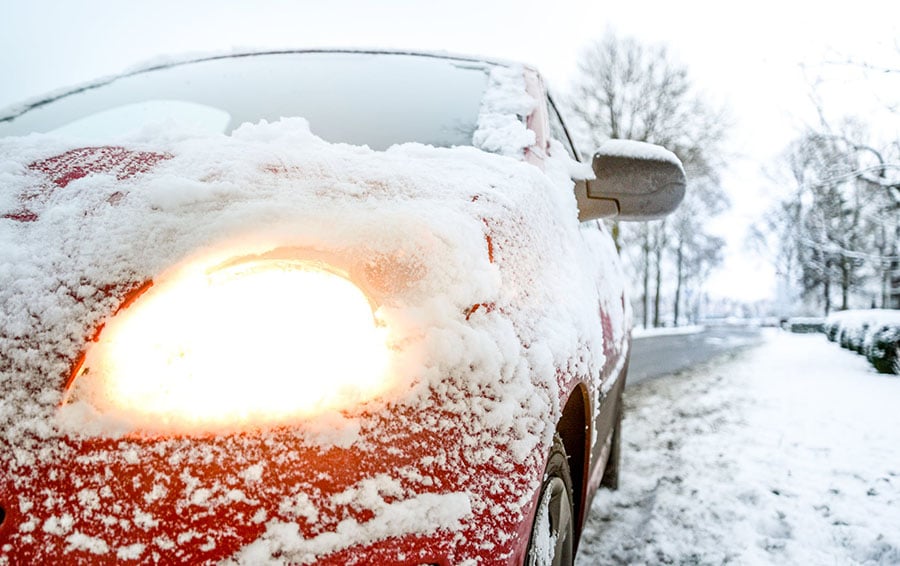Vehicle off-road time (VOR) – the time companies lose to the unscheduled repairs and servicing of company or grey fleet vehicles – can significantly impact business profitability. Indeed, some industry estimates calculate a cost to firms of between £800 and £1,000 for each day a vehicle is off the road.
With insight from the Department for Transport and Office (National Statistics) suggesting that a fifth of all crashes in the UK between December and March are linked to treacherous weather conditions, it’s clear that the colder weather can increase the risk of VOR. Mitigating the impact of winter and decreasing the risk of business downtime over this period should be a key priority for any manager. To help, I’ve collated my top tips to prepare your business for winter.
Get a winter service
The cold weather can result in numerous issues for older vehicles, but many of these can be prevented by regular servicing and maintenance checks. A typical winter vehicle check will see a mechanic examine tyres, batteries, coolant and antifreeze, as well as windscreen wipers, lights and oil.
For vehicles likely to cover long distances, a winter service could prove highly cost effective, minimising the threat of any issues that could impact on business performance before they occur. At Prestige Fleet Servicing, we work with our customers to optimise vehicle testing schedules and to minimise VOR.
Maintain your battery
Battery problems are the top reason for vehicles breaking down in colder weather. Temperature drops affect the chemical process inside vehicle batteries, making it harder for a battery to hold a charge. With heating, lights and windscreen wiper use all increasing a vehicle’s electrical load during winter, battery maintenance can help to minimise the risk of breakdown, keeping vehicles on the road throughout the season.
If a vehicle is being used regularly for short trips, it may be worth asking drivers to charge the battery regularly during the winter months, especially if it’s more than three years old, while taking vehicles out for regular runs to keep the battery charged is also key.
Check your tyres to improve vehicle traction
Tyres can also be more problematic at this time of year as the weather can impact a vehicle’s tyre pressure. Drivers should be encouraged to check their tyres when there are any sharp rises or falls in temperature to improve vehicle traction on icy and wet roads. As a rule of thumb, tyre pressure can drop by between one to two pounds per square inch (PSI) when the temperature decreases by 10°C. It’s well worth sending drivers a reminder of where they can check their vehicle’s correct tyre pressure, which can usually be found on a plate in either the frame of the driver’s door, the frame of the front passenger door or under the fuel flap, or in the vehicle’s user manual. We also recommend at least 3mm of tyre tread in the colder months.
Share winter driving tips across your fleet
Recent research has found that a third of motorists feel poorly prepared for winter driving, while 52% fail to take preventive actions to maximise safety (such as waiting until their windscreen has demisted before starting their journey). Sharing best practice tips with your drivers can help to prevent accidents and minimise business downtime. Routes should be planned around main roads which are more likely to be cleared and gritted. It’s harder to brake on wet surfaces, so drivers should leave twice as much space as usual between your vehicle and the one in front. The Highway Code also advises turning on headlights where visibility is reduced to less than 100m. In the event of a breakdown, drivers should keep the bonnet of their vehicle closed while they wait for assistance as rain-soaked electrics can make restarting the engine more difficult.
Initiate a grey fleet paperwork check
As we’ve shown above, maintenance matters more than ever in winter, and this applies to all vehicles being used for business travel, regardless of ownership. If a vehicle is being used for business travel, employers are responsible for ensuring it is adequately maintained and safe. Poorly maintained vehicles can leave employers exposed under the Corporate Manslaughter Act 2007. Initiating a grey fleet paperwork check, requesting evidence of recent taxation, proof of insurance, including business cover, servicing and an up-to-date MOT, will give you peace of mind that employees will be safe and legal over the winter months.
Our team are ready to take away the associated stress and strains of managing your fleet. Visit https://www.theaa.com/business/prestige-fleet-servicing to find out more about how we can help.
Encompassing over 570 approved garages across the UK, Prestige Fleet Servicing provides service, maintenance, and repair (SMR) work, as well as MOTs, for vehicles UK-wide. Part of the AA, Prestige now serves over 60% of the fleet sector, supporting companies of all sizes across B2B, B2C and the used vehicle warranty sector. Prestige works in partnership with motor industry standards organisations such as the Independent Automotive Aftermarket Federation (IAAF) and The Motoring Ombudsman, to make sure their garage network maintains a high standard with any issues reported and rectified quickly.






